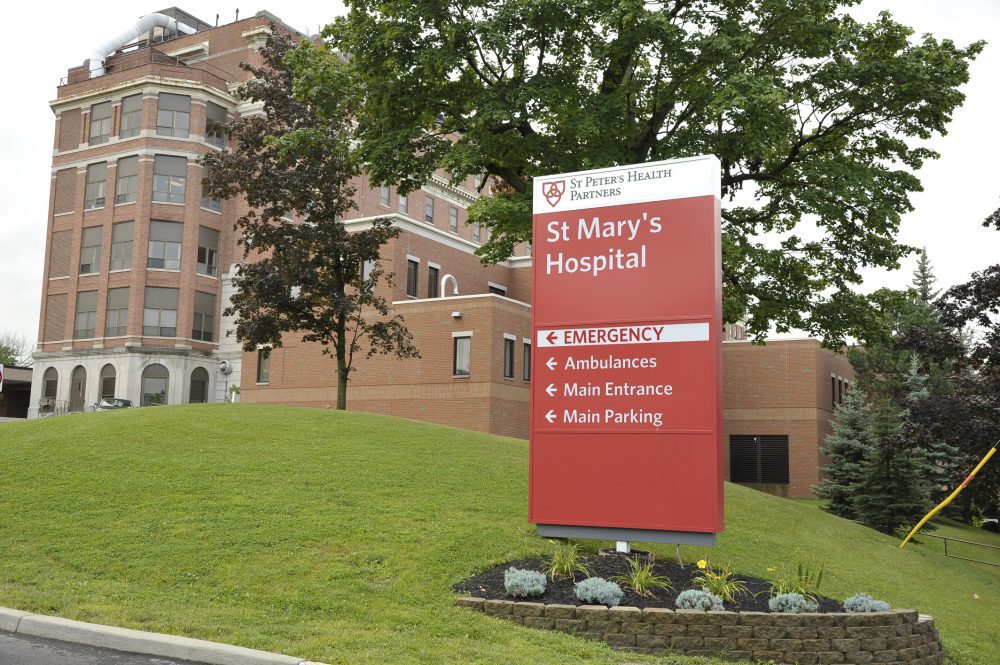
[This piece was written by Cynthia Cook, ANP, Pelvic Health Center at Albany Memorial Hospital, St. Peter’s Health Partners.]
Almost every person will experience some type of pelvic health issue over the course of her or his lifetime. Bladder and bowel issues are particularly common with neurological disorders like multiple sclerosis, Parkinson’s disease, and stroke. Although these issues are common and treatable, many people avoid talking to their doctor because they are embarrassed or confused.
Pelvic health covers all of the pelvic organs including the bladder, parts of the bowel or intestine, reproductive organs, and the muscles, ligaments and other tissues that hold everything together.
Pelvic floor disorders (PFDs) occur when pelvic muscles are weakened, uncoordinated, non-relaxing, or strained. In women, tears in the connective tissue can lead to weakened structural support, also known as a prolapse. Knowing what to look for is a first step toward fixing the problem.
Some symptoms include:
For Men and Women
- Pelvic pain/discomfort
- Involuntary loss of urine or feces (incontinence)
- “Fullness” in the rectum
- Frequent difficulty urinating/having a bowel movement
- Difficulty starting urination
- An “insides are falling out” sensation
- Pain with sexual intercourse
- Lack of sexual sensation
Women may also Experience Symptoms Including:
- “Fullness” in the vagina
- Feeling a lump in the vagina, or vaginal pressure/pain
- Abnormally heavy periods
If you are experiencing any of these symptoms, discuss them with your doctor. There are tests they can perform to help pinpoint your issues. Some tests your doctor may order include:
Urodynamic Studies
These tests look at how well the bladder, sphincter, and urethra are storing and releasing urine.
Cystoscopy
This examination allows your doctor to look at the inside of the bladder and the urethra using a thin, lighted instrument called a cystoscope. It can visualize areas of your bladder and urethra that usually do not show up well on X-rays.
Anorectal Manometry
This test can diagnose problems with moving your bowels by measuring the tone in the anal sphincter and rectal muscles.
Once you have a diagnosis, there are many treatments to help you return to your active lifestyle. Options may include pelvic floor muscle exercises (Kegels), bladder training, medications, fiber supplements, laxatives, nerve stimulation, injections and surgery, among others.
It is also important to maintain a healthy weight, hydrate and eat a diet with enough fiber. Poor posture, straining and back/joint disorders can further stress muscles and nerves in the pelvis, which can cause PFDs to worsen.
St. Peter’s Health Partners offers comprehensive services for the diagnosis and treatment of pelvic floor disorders at its Pelvic Health Center at Albany Memorial Hospital.
Our experienced team takes a multidisciplinary approach to treating pelvic floor disorders, with a commitment to your comfort and privacy as we offer our expertise to restore your health. Services available include biofeedback and electrical stimulation therapy; education on pelvic floor exercises and dietary issues; surgical and non-surgical options; InterStim therapy; pelvic physical therapy; and Percutaneous Posterior Tibial Nerve Stimulation Therapy (PTNS).
For more information, please call 518-429-2566 or visit us at www.sphp.com/pelvic-health-incontinence.





